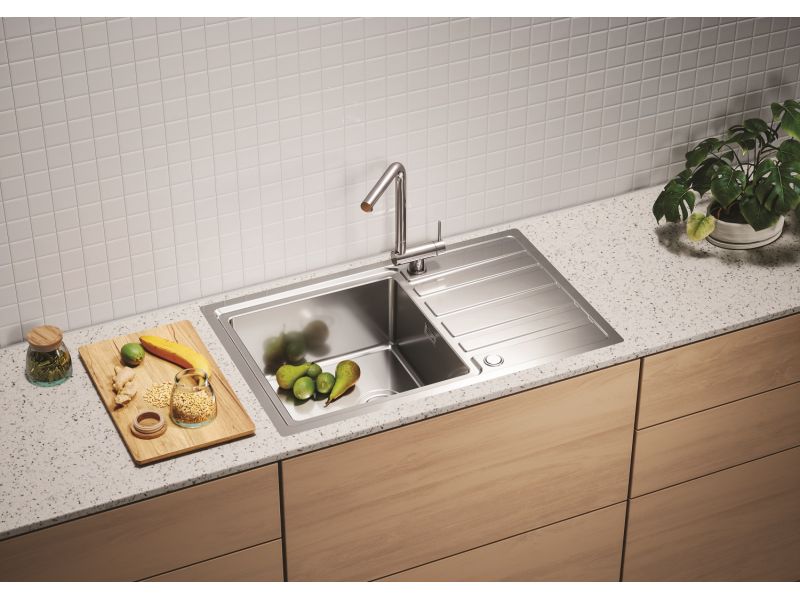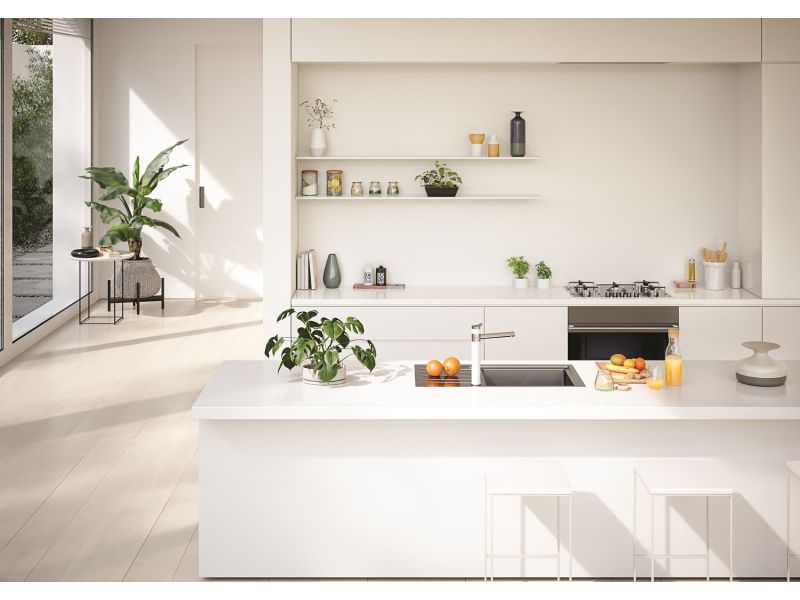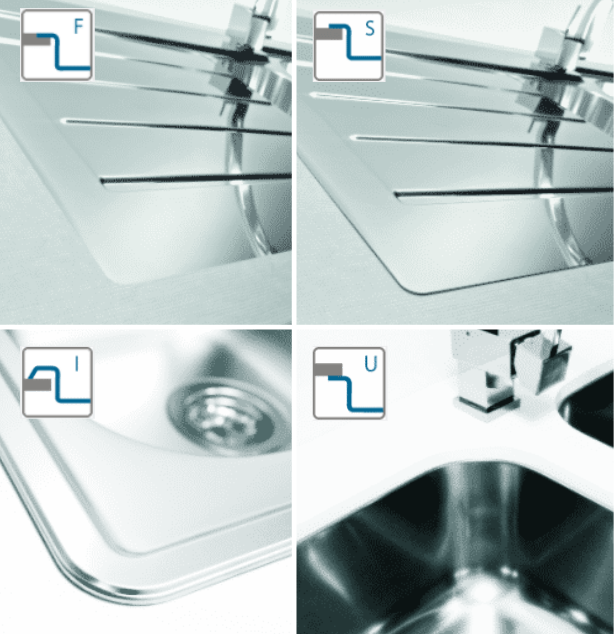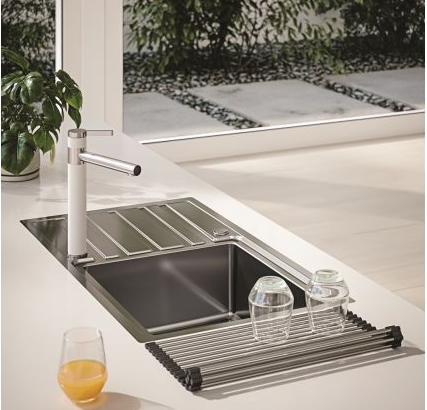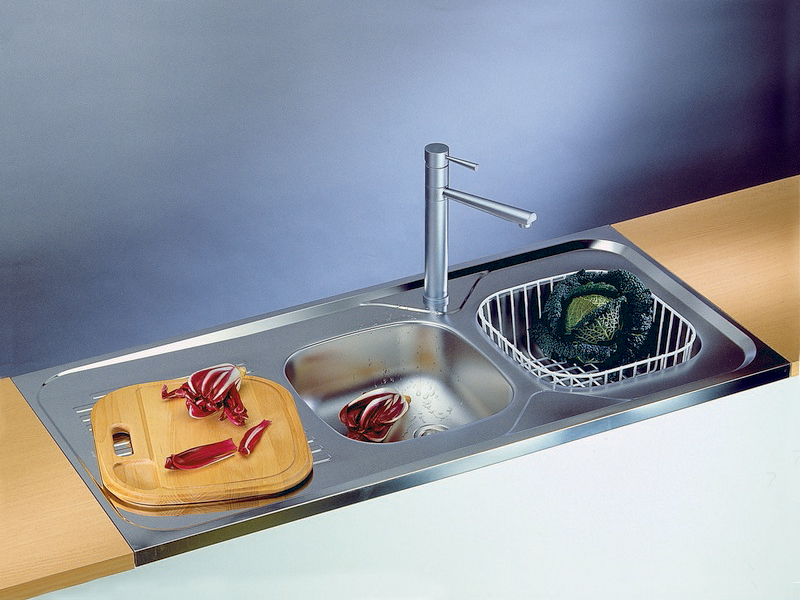No need to worry, the installation of a kitchen sink into a kitchen countertop is no science – the only question is whether the kitchen sink is installed under the kitchen worktop, parallel to it or slightly above it.
Some types of kitchen sink installation are considered to be classic and are more suitable for the traditional look of the kitchen while the others are more trendy and coincide with the modern styles of minimalist kitchens.
Since the kitchen sink with the kitchen tap is such a noticeable point in the entire kitchen that attracts the attention of every guest, it is very important to choose the right type of installation.
Would you decide on a trendy look of a »submerged« sink or would you prefer that the sink protrudes just a little over the kitchen worktop?
Learn more about different types of kitchen sink installation!
Types of kitchen sinks installation
Concerning the installation into the kitchen countertop, the Alveus kitchen sinks have different installation possibilities to adapt as much as possible to the design and architectural requirements of the kitchen.
Modern trends in the kitchen prefer mainly:
- flush mount sinks (F) and
- flat mount sinks (S)
but often are used also
- classic insert sinks (I) and
- undermount sinks (U).
The most traditional type of installation which is used less and less are
- sit-on sinks.
We would like to introduce you to each individual installation type and highlight its pros and cons.
1. Flush mount sinks (F)
Where the surface of the sink and the surface of the kitchen countertop are on the same level.
Flush mount kitchen sinks are very popular among the buyers of modern kitchens as they have an attractive and trendy look.
Flush mount kitchen sinks are installed into a previously prepared kitchen countertop as the edge of the worktop should fit perfectly to the rim of the kitchen sink.
Pros and cons:
For this type of installation, the kitchen countertop made of waterproof material (natural stone, composite material) is required, which has been processed beforehand so that the upper rim of the sink is in the same level as the kitchen countertop.
The advantage of flush mount kitchen sinks is the working surface without any edges, extremely simple cleaning, and an attractive appearance.
2. Flat mount sinks (S)
Installed into the kitchen countertop in such a way that an almost uniform working surface is created.
The thin, almost invisible rim of the sink allows quick and simple cleaning. The installation is very simple even in the classic worktops.
Pros and cons:
Since an extremely thin rim of the sink slightly covers the kitchen countertop, there is no need for a waterproof worktop, so that this type of installation may be used for all materials of kitchen countertops.
This is a very elegant installation. The only disadvantage is that at cleaning you cannot clean the residues directly into the sink, as smaller particles get stuck under the thin rim.
WE RECOMMEND: The Rando UP line, an advanced line of high-quality and elegant Rando sinks. Another novelty is a modern type of sink installation which can be either flush mount or flat-mount.
You may find more information here. 
3. Classic insert sinks (I)
Classic insert sinks (I) are installed into the kitchen countertop and form a part of the continuous working surface.
At this type of installation, the sink is inserted from above into the cut-out of appropriate size made in the kitchen countertop and fixed with enclosed clamps.
Pros and cons:
This type of installation is, as the name implies, classic and matches excellently with the kitchens of traditional appearance.
The insert sink is also great for the wooden kitchen countertop because there is no need for a waterproof edge, as this is covered with a few millimeters high rim of the kitchen sink.
It is necessary to note that due to the kitchen sink rim you will not be able to wipe the dirt and food residues directly into the kitchen sink. But you will have the possibility to choose any kitchen countertop and also a wide range of kitchen sinks made of stainless steel, composite Granital, and tempered glass.
4. Undermount sinks (U)
This type of installation could also be called under-worktop or under-mount installation as the sink is installed into the worktop from below, where the kitchen sink rim is covered by the surface of the kitchen countertop made of natural stone or composite materials.
Such installation enables the use of larger dimensions and unlimited combinations.
Pros and cons:
The surface without edges contributes to the simple maintenance of high hygiene standards as the food residues from the kitchen countertop may be wiped directly into the sink.
The aesthetic value of this type of installation contributes significantly to the great appearance of the kitchen as a whole.
The disadvantage of this type of installation is a limitation of the countertop material selection, as the countertop should be made of waterproof material.
5. Sit-on sinks
The classic installation of the sit-on sinks is ideal to prevent water from spilling on the kitchen countertop.
Sit-on sinks are installed as the top end element of one or more kitchen cabinets – this huge one-piece kitchen sink thus completely replaces the kitchen worktop in the entire part of the washing unit in your kitchen.
Pros and cons:
The high rear wall rim prevents the water from spilling behind the kitchen cabinet. A great choice for those who prefer manual dishwashing or decide for the classic above-worktop surface without any water-repellent treatment.
